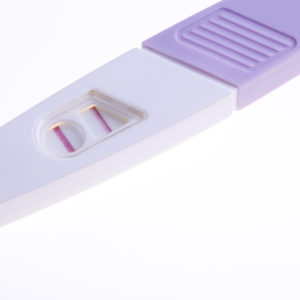A new analysis from the Guttmacher Institute shows that more than half of women denied coverage for abortion under the Hyde Amendment are women of color. Other recent data show that while black women comprise only 14.9 percent of women of reproductive age, we make up 27.6 percent of abortion patients.
The reasons for these disparities are complex, and rooted in centuries of oppression. With the Supreme Court having ruled on the most significant abortion rights case in recent history, Whole Woman’s Health v. Hellerstedt, and the Hyde Amendment back in the news, it’s critical to understand the barriers to reproductive health that black women still face.
As I write this, I reflect on the many times anti-abortion activists and politicians have exploited black women’s experiences to justify an anti-choice agenda. Like when politicians in Congress introduced the “Susan B. Anthony and Frederick Douglas Prenatal Nondiscrimination Act,” or PRENDA, a ludicrous, disingenuous bill that exploits stereotypes about black women to ban so called “race-selective” abortion. At the core of this legislation is the spectacularly offensive presumption that black women use our wombs to commit genocide.
Those who oppose abortion have never seemed to understand why some women need this health care, or else perhaps they would support access to safe, effective and affordable birth control, the surest way to prevent the need for abortion in many instances.
Decisions about pregnancy and when to become a parent are some of the most important decisions we make in our lives. Each woman’s circumstances are unique — we can’t walk in her shoes. That’s precisely why women, and why black women in particular, must be able to make these decisions for ourselves, without politicians standing in the way. While we can’t possibly know all the reasons a black woman might end a pregnancy, we can and should have an honest conversation about why more black women seek this health care, and why we are disproportionately harmed by restrictions and coverage bans.
First, some perspective. Nationally, the rate of abortion is dropping alongside the unintended pregnancy rate. The reasons for this are relatively straightforward. The advent of more highly effective birth-control options (such as the patch and the ring), and specifically Long Acting Reversible Contraceptives (IUDs and implants, often referred to as LARCs) are largely credited for the decline. In addition, increased insurance coverage for birth control — thanks, Obamacare! — and increased access to emergency contraception may have played a role.
Did you notice a theme? When women have access to a wide range of safe and effective birth-control options, unintended pregnancy and the need for abortion decrease.
The use of LARCs, and the IUD in particular, more than tripled between 2007 and 2012. But black women aren’t using LARCs at the same rates as whites and Latinas, and it’s still not clear why. In fact, black women are less likely to use any form of contraception. Eighty-three percent of black women who are at risk of unintended pregnancy currently use a contraceptive method, compared with 91 percent of Latinas and white women, and 90 percent of Asian-American and Pacific Islander women.
We are living in a brave new world of contraceptive options and access — but black women aren’t reaping the benefits. This is due, in part to the fact that black women are more likely to be low-income, earning just 63 cents on the dollar compared to white men, and it’s harder to get birth control if you can’t afford it. But economics doesn’t explain it all: while low-income women across race and ethnicity are more likely to experience unintended pregnancy and seek abortion, black women still have higher rates of abortion even when controlling for income, according to a 2008 report by the Guttmacher Institute.
Black women’s ability to use the latest and greatest technologies with confidence and comfort requires that we dismantle the many barriers standing in the way. To benefit from the birth-control revolution in which we find ourselves, you need: education and full information about your options, access to a health care provider, health insurance, resources, transportation, the ability to take time off of work to get to an appointment, someone to watch your kids while you’re at the doctor, documentation of your immigration status, freedom from domestic abuse wherein a partner sabotages birth control or refuses condoms, and so on. At every point, black women have fewer resources, economic and otherwise, to take advantage of these new technologies. In addition, some may also have reservations about a medical system with a long history of abusing and exploiting our bodies for profit.
A racial and economic divide is emerging: on one side are white and wealthy women, for whom abortion is rarer and paradoxically more accessible, and on the other side are women of color and low-income, who are more likely to need an abortion and less likely to be able to afford or access one.
We need to make sure that black women have access to reproductive health providers who listen to our concerns and treat us with respect and dignity. We need to increase health insurance coverage, including expanding Medicaid in all 50 states, and lift the bans that deny insurance coverage for abortion. We need to fund fully comprehensive sexual education in our schools so that black girls understand how their bodies work, how contraception works, and feel empowered to negotiate in relationships. What black women do not need is more restrictions on abortion, or politicians telling us how to live our lives.
Ultimately, reproductive health is central to black women’s liberation because to attain it we must address all the obstacles black women face: racism, sexism, economic injustice, social stigma, violence, the list goes on. In other words, we must treat black women as whole, complex and unique human beings.

